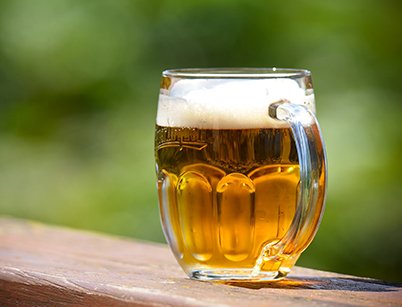Editor’s Note: Beer 101 is a series about craft beer in conjunction with the Aug. 21 Beerfest that will be held at the James Brown Arena. The Aug. 15 story highlights the Beerfest. Aug. 17 – Meet area brewers Aug. 19 What’s in a Name? Learn the differences between an ale, an IPA, a lager and others. Aug. 22 – Beerfest Coverage. Aug. 23 – Where To Get Craft Beer in the Area.
A taproom can be a confusing place.
On just about any taproom menu will be IPAs, hazy IPAs, double IPAs, brown ales, strong ales, stouts, porters, sours, even something called a lambic, whatever that is.
MORE: Beer 101: Beerfest 7 Heading to James Brown Arena
With Beerfest only a few days away on Saturday at the James Brown Arena, and more than 100 different styles of beer out there, according to the Brewer’s association, it’s time to bone up on beer.
Depsite those confusing taproom menus, there are actually only two basic kinds of beer, according to Jim Christian, taproom manager at Savannah River Brewing Co. in Augusta. They are ales and lagers. Well, and a third type called spontaneously fermented. It’s the product of wild yeast and bacteria getting into the beer.
MORE: Beer 101 Local Brewers Get Creative
Spontaneously fermented beer is the oldest type. It was developed when had far less control over outcome because they only had naturally occurring yeasts, Christian said. Sours are probably the most common type of spontaneously fermented beer.
Ales and lagers appeared once it became possible to control type of yeast, brewing temperature and other technicalities, he added.
According to Brey Sloan, owner of Riverwatch Brewery, the process used to make most kinds of beer is exactly the same. It’s the ingredients that account for different styles.
[adrotate banner=”54″]
Ales are brewed at a higher temperature and with a type of yeast that floats to the top of the barrel and is more alcohol resistant than the yeast used to brew lagers. Lagers use yeast that drops to the bottom of the barrel and is less resistant to alcohol, so lagers usually have a lower alcohol content than ales.
Ale is the oldest style of beer. It has a relatively short fermentation period while Lagers need a longer time to ferment and do so at a lower temperature than ales.
Thompson Island, a craft brewery in Rehoboth Beach, Del., has an online guide to tasting beer that suggests paying attention to six characteristics of beer: aroma, flavor, appearance, taste, feel (or texture) and overall enjoyment. The Brewers Association offers a rating sheet that can be used to evaluate all those characteristics plus more.

Within those two broad categories are a bunch of subcategories, according to a craft beer guide published by the Brewer’s Association. The more common styles listed on the guide are:
Pale ales are considered the classic American beer, according to the Brewer’s Association. They tend to be fruity or piney and what’s called “hop forward,” meaning pale ales tend to be pretty bitter. To try a pale ale, look for an American pale ale, a blonde ale or an English-style bitter.
Strong ales generally have a fairly high alcohol content, 7% or higher. Barley wines are a type of strong ale.
[adrotate banner=”30″]
Brown ales range in color from amber to brown. They often feature caramel and nut flavors. Usually, brown ales show up on menus as exactly what they are: brown ales.
India pale ales are very bitter and have pronounced hops flavor. They are likely to taste like citrus or pine. These, too, are usually listed simply as IPAs.
Scottish-style ales are more malty flavored than hoppy. They have a thick texture and sometimes a light peat or smoky flavor. Because these are flavored with malt more than hops, they’re sweeter, less bitter. And, of course, they originate in Scotland. Scottish style ales are sometimes listed as wee heavy.

Dark lagers are dark beers, but they don’t have the same strong taste as a stout. Dark lagers on a menu will be listed as American amber lagers, German-style dunkel or Oktoberfest and Vienna-style lagers.
Wheat beers are usually pretty light, and they usually feature flavors of spice or citrus. Hefeweizen are a common wheat beer. Wheat beers can be listed as wheat wine ale, witbier, of Hefeweizen.
Belgian styles are gold to copper in color and have a more prominent malty flavor, so they are sweeter than something like an IPA, though a bitterness should be present in most Belgian styles. Belgian styles will always have the word Belgian in the name on the menu.
[adrotate banner=”19″]
Hybrid beers are half ale, half lager. They borrow brewing techniques from both. They may be listed as cream ales, altbier, kölsch or red beer.
Porter is a kind of ale that is dark black and features roasted malt. They can be dry or fruity. Porter will almost always be in their names.
Stouts are dark, roasted ales. They’re usually less sweet than a porter, and they often have coffee flavors associated with them. They also tend to have a thick, creamy head. Think Guinness. You’ll also sometimes see a stout listed as an imperial or Russian imperial stout. An imperial stout has a strong flavor and a high alcohol content. A milk stout has lactose added to add sweetness.

Sour beers are an ancient style of beer that are made with wild yeasts. They are tart and may have flavors of fruits or spices. Lambics are a sour beer.
Pilseners are usually dry and bitter, golden in color, and they have a crisp finish. They’re a popular summer beer. These will usually be listed as an American lager or as a pilsener.
Specialty beers, like beers flavored with spices and herbs, smoke or barrel aged. These include flavored beers such as pumpkin, chocolate or coffee and other specialties.
The Brewers Association has several publications available on its website that offer small, medium or large amounts of information about beer. These range from the one-page tasting guide to a 16-page beer overview pamphlet to a 120-page study guide. The Brewer’s Association website is https://www.brewersassociation.org/.
Debbie Reddin van Tuyll is a writer for The Augusta Press. Reach her at debbie@theaugustapress.com.
[adrotate banner=”56″]












